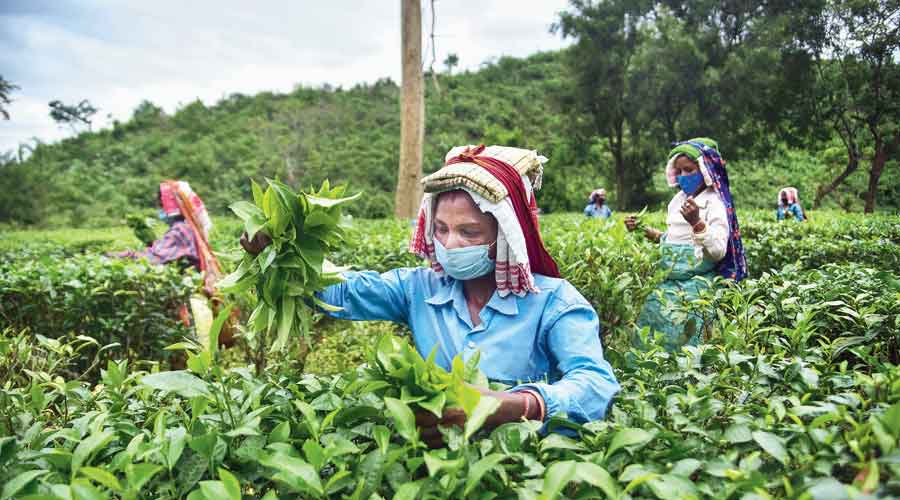The dip in tea production last year as the pandemic hit the country reduced export by over 40 million kilos but the brew fetched a better rate from overseas, data published by the Tea Board of India reveals.
Still, the tea industry earned Rs 500 crore less through exports in 2020 compared to 2019.
In 2019, the Indian tea industry produced 1,390.08 million kilos of tea. In 2020, the figure was 1,257.53 million kilos, down by around 133 million kilos. The pandemic-induced lockdown and inclement weather during monsoon months contributed to this dip.
In 2019, total tea export was 252.15 million kilos. In 2020, it slid to 209.72 million kilos.
The average price realised per kilo of tea was higher in 2020 at Rs 249.63, compared to 2019 when it was Rs 227.55. However, the marginal rise in prices could not compensate the production deficit.
In 2019, the total earnings from tea export was over Rs 5,700 crore, which came down to around Rs 5,200 crore in 2020.
“Similar to production, exports also came down last year. There was, however, a marginal increase in average price. In all, the industry lost around Rs 500 crore of earnings from export in 2020 compared to 2019. This year, we expect exports to go up as production has been steady so far,” said Sumit Ghosh, secretary of the north Bengal branch of the Tea Association of India.
Like with exports, tea prices rose in the domestic market. In 2019, the average price at auction centres was Rs 140.73 per kilo. In 2020, it climbed to Rs 184.69 per kilo.
A tea planter in Siliguri said the price rise was the only saving grace. It also enabled tea companies to shell out extra towards revised workers’ wages in Bengal and Assam.
This year, despite the second wave of the pandemic, the overall scenario seems positive, tea experts said. In the first five months of 2021, 275.01 million kilos of tea was produced, higher than production in the corresponding months of 2020 (210.23 million kilos).
On the export front, the total tea exported from January to April this year is around 5 per cent less than in the corresponding period of 2020. However, there has been a rise in price by around 19 per cent. In the domestic market, the price per kilo is lower than what it was in 2020 but higher than the rate in 2019.










